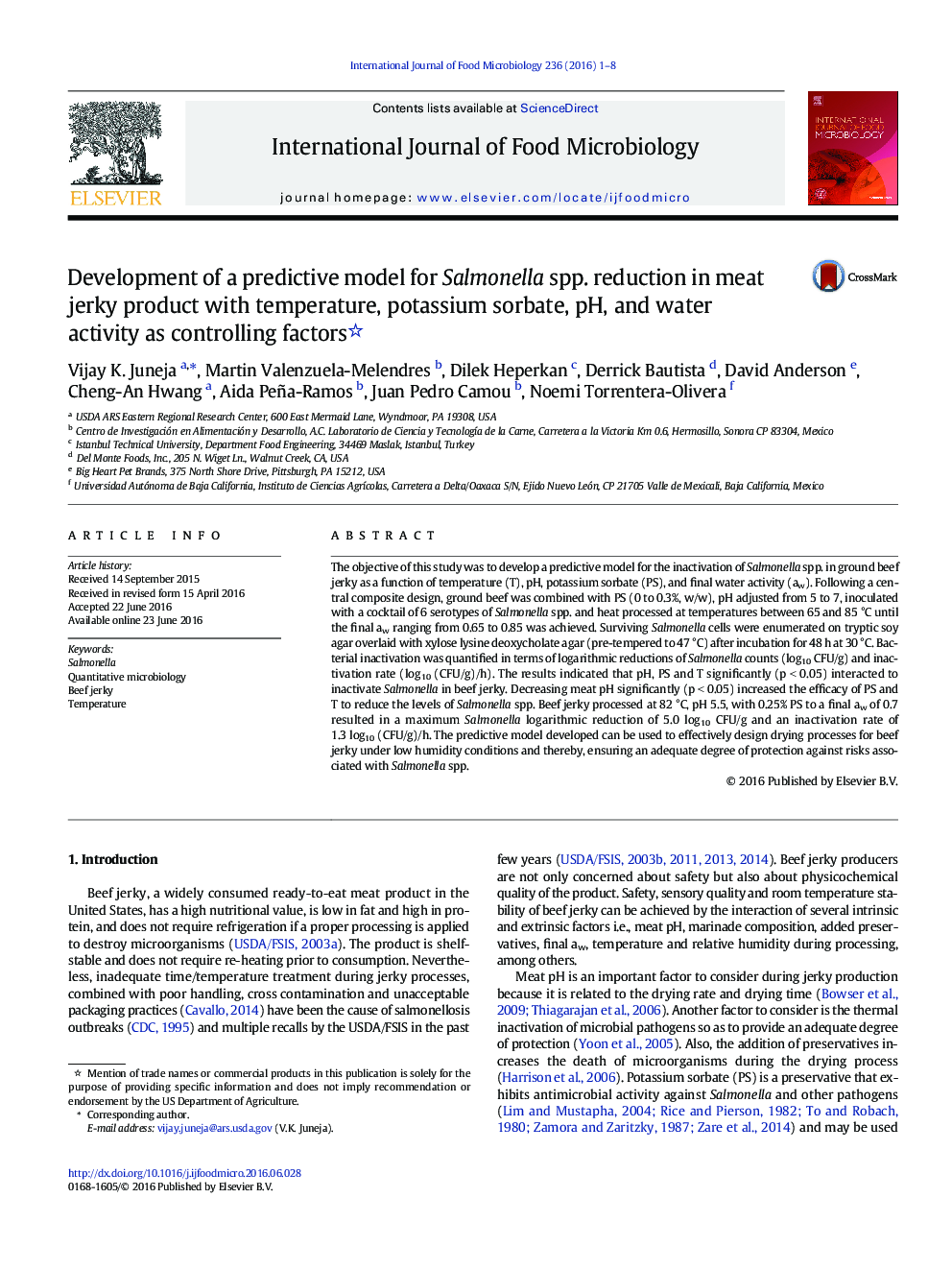| کد مقاله | کد نشریه | سال انتشار | مقاله انگلیسی | نسخه تمام متن |
|---|---|---|---|---|
| 4366237 | 1616547 | 2016 | 8 صفحه PDF | دانلود رایگان |

• We determined beef jerky processing conditions for 5 log reduction of Salmonella spp.
• Potassium sorbate (PS), pH, aw, and temperature (T) significantly interact to inactivate Salmonella in beef jerky.
• Decreasing meat pH significantly increased the efficacy of PS and T to reduce levels of the pathogen.
• The predictive model will serve as a tool for to evaluate risk of Salmonella survival in beef jerky during processing.
The objective of this study was to develop a predictive model for the inactivation of Salmonella spp. in ground beef jerky as a function of temperature (T), pH, potassium sorbate (PS), and final water activity (aw). Following a central composite design, ground beef was combined with PS (0 to 0.3%, w/w), pH adjusted from 5 to 7, inoculated with a cocktail of 6 serotypes of Salmonella spp. and heat processed at temperatures between 65 and 85 °C until the final aw ranging from 0.65 to 0.85 was achieved. Surviving Salmonella cells were enumerated on tryptic soy agar overlaid with xylose lysine deoxycholate agar (pre-tempered to 47 °C) after incubation for 48 h at 30 °C. Bacterial inactivation was quantified in terms of logarithmic reductions of Salmonella counts (log10 CFU/g) and inactivation rate (log10 (CFU/g)/h). The results indicated that pH, PS and T significantly (p < 0.05) interacted to inactivate Salmonella in beef jerky. Decreasing meat pH significantly (p < 0.05) increased the efficacy of PS and T to reduce the levels of Salmonella spp. Beef jerky processed at 82 °C, pH 5.5, with 0.25% PS to a final aw of 0.7 resulted in a maximum Salmonella logarithmic reduction of 5.0 log10 CFU/g and an inactivation rate of 1.3 log10 (CFU/g)/h. The predictive model developed can be used to effectively design drying processes for beef jerky under low humidity conditions and thereby, ensuring an adequate degree of protection against risks associated with Salmonella spp.
Journal: International Journal of Food Microbiology - Volume 236, 7 November 2016, Pages 1–8